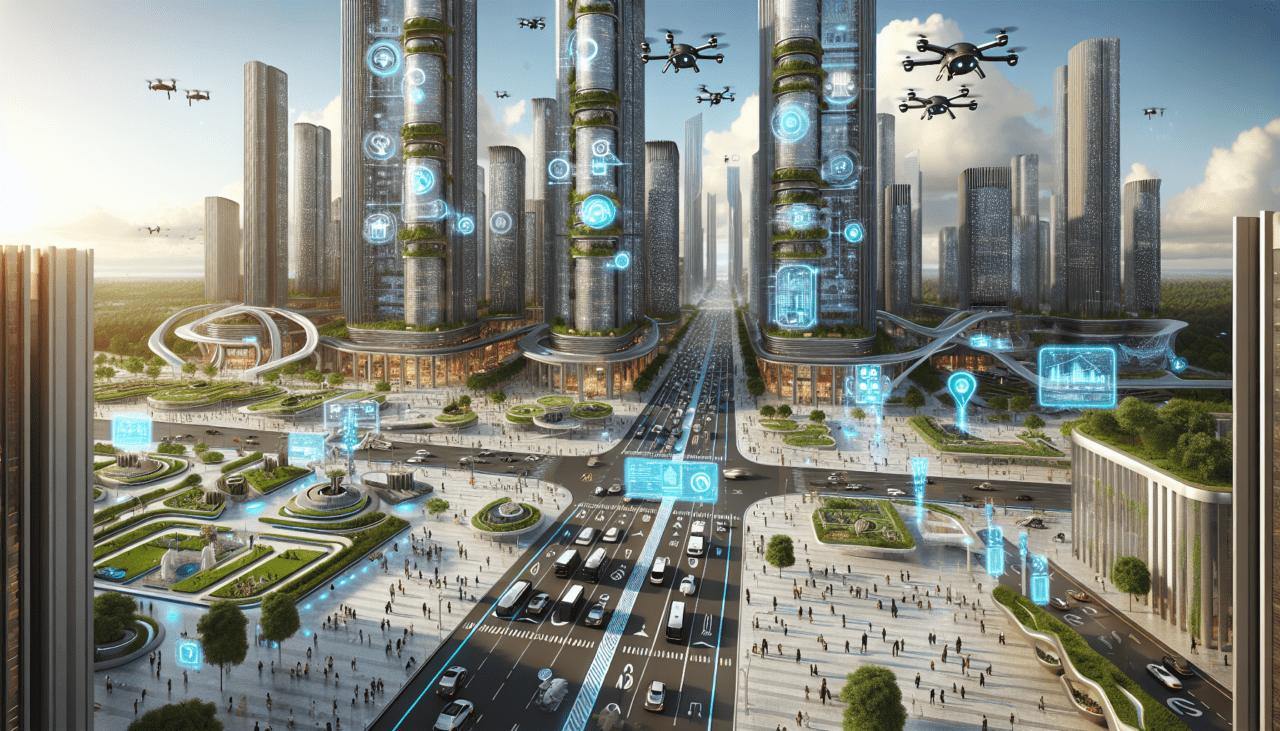I remember visiting Seoul a few years back, and walking through areas where everything just… worked. The public transport was seamless, real-time information was everywhere, and even the air quality data was readily available. It felt less like a city I was used to and more like an organism, responsive and interconnected. It really got me thinking about where our own cities are headed and what that means for businesses operating within them. We’re not just talking about adding some tech gadgets; we’re talking about a fundamental rethink of how cities function, which is essentially The Future of Urban Planning & Smart Cities. This shift presents massive opportunities, but also requires a fresh perspective on infrastructure, services, and engagement. For the business community, understanding this evolution isn’t just academic; it’s crucial for identifying new markets, optimizing operations, and contributing to – and benefiting from – this transformative period.
Navigating the Technology Driving This Evolution
Navigating the technology driving this evolution is key. It’s the engine powering everything from traffic management to waste collection, and businesses need to grasp its implications. The integration of IoT devices, AI algorithms, and massive data analytics is creating a level of urban intelligence we’ve only dreamed of before. This isn’t just about efficiency; it’s about creating predictive capabilities that can anticipate needs before they arise. Think about logistics companies optimizing routes based on real-time traffic and predicted event congestion, or utility companies fixing issues before outages occur. The data generated by a smart city is a goldmine, offering insights into citizen behavior, resource consumption, and infrastructure performance that can inform business strategy and product development.
The Backbone of Data and Connectivity
At the heart of The Future of Urban Planning & Smart Cities lies data. Sensors embedded everywhere – on traffic lights, waste bins, public transport, and infrastructure – collect continuous streams of information. This data is then processed and analyzed using AI and machine learning to identify patterns, predict outcomes, and automate responses. Businesses that can tap into or provide services around this data infrastructure, whether it’s data analytics platforms, cybersecurity solutions for urban networks, or data-driven consulting, will find significant opportunities. The need for robust, secure, and high-speed connectivity, like 5G and beyond, is paramount to handle this data flow.
AI and Automation for Urban Efficiency
AI isn’t just for optimizing ad campaigns anymore; it’s managing power grids, directing autonomous vehicles, and even coordinating emergency services in smart cities. Businesses involved in developing or implementing AI solutions for urban challenges, such as intelligent transportation systems, predictive maintenance for infrastructure, or automated public service delivery, are at the forefront of this wave. Imagine AI optimizing energy distribution to balance load and cost in real-time, or using computer vision to identify maintenance needs on bridges or roads. These applications reduce operational costs for cities and open up new service delivery models for businesses.
Building Green and Thinking Circular
The drive towards sustainability and resilience is another non-negotiable aspect of The Future of Urban Planning & Smart Cities. Cities face increasing pressure from climate change, resource scarcity, and population growth. Smart city planning is integrating green technologies and circular economy principles not just because it’s good for the planet, but because it builds more resilient and economically viable urban environments. This focus creates a huge market for businesses specializing in renewable energy, smart grid technology, water management, green building materials, and waste-to-energy solutions. Cities are setting ambitious environmental targets, and they need innovative partners to help them get there.
Preparing for the Unpredictable
Resilience planning, often linked with sustainability, is about preparing cities for shocks – climate events, pandemics, or cyberattacks. A smart, interconnected city can also be vulnerable if not designed with security and redundancy in mind. Businesses involved in developing resilient infrastructure, disaster prediction and response systems (leveraging AI and data), or cybersecurity for critical urban systems are essential players. This includes everything from smart flood barriers managed by predictive analytics to energy grids that can isolate themselves to prevent cascading failures. It’s about ensuring continuity and safety in an increasingly uncertain world.
Connected Transport and Autonomous Futures
Finally, rethinking mobility and connectivity is reshaping how people move and interact within cities, profoundly impacting businesses. The rise of autonomous vehicles, shared mobility services, and integrated public transport systems promises to reduce congestion, improve air quality, and change how people use urban space. Coupled with ubiquitous digital connectivity, this also alters work patterns, retail experiences, and the delivery of goods and services. Businesses must adapt their strategies for commuting, logistics, and customer access in a world where physical presence might become less important than digital reach and efficient last-mile delivery.
Beyond Mobility: Ubiquitous Digital Access
High-speed, reliable connectivity is becoming a fundamental urban utility, like water or electricity. The deployment of 5G and future networks enables not just faster downloads, but the real-time communication needed for smart city systems and opens up possibilities for augmented reality experiences, remote work hubs, and entirely new digital services. For businesses, this means leveraging connectivity for everything from enhanced customer experiences in retail using AR, to optimizing remote team collaboration, to enabling drone deliveries. Access to connectivity can also influence site selection and operational efficiency.
Looking Ahead
Looking ahead, The Future of Urban Planning & Smart Cities isn’t a single blueprint, but a dynamic interplay of technology, environmental needs, and human aspirations. For businesses navigating this landscape, the takeaway is clear: agility, innovation, and a willingness to collaborate with city governments and other stakeholders are paramount. Invest in understanding the data streams cities are generating, explore how your services or products can contribute to sustainability and resilience goals, and rethink your operations in the context of changing mobility and connectivity. The urban environment is becoming a complex, interconnected system, and those businesses that can integrate themselves intelligently into this system are the ones that will thrive. It’s an exciting, challenging, and opportunity-rich time to be involved in the evolution of our cities.
